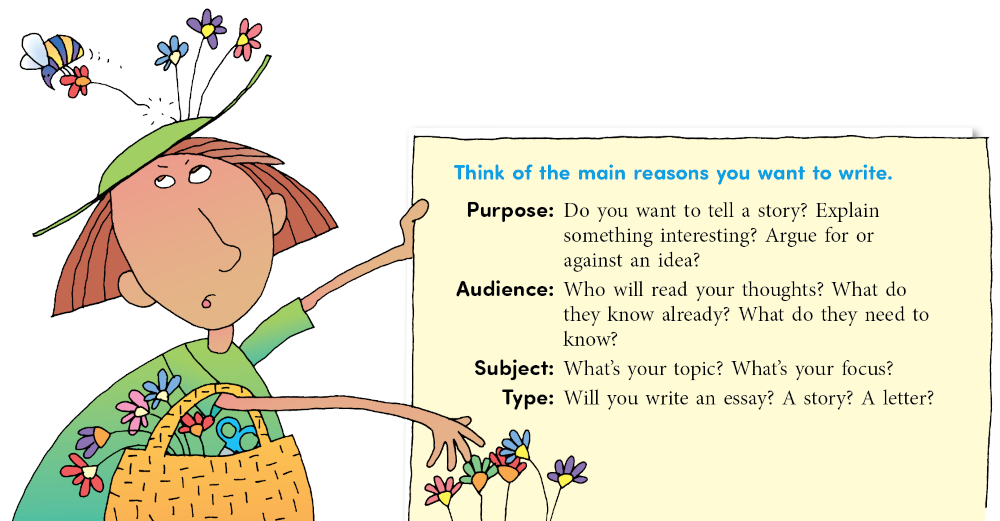WT 026
Page 26
Collecting Details
A bouquet is made up of many colorful flowers, and a piece of writing is made up of many wonderful details. What ideas do you want to put in your thought bouquet?

Gathering Details
Use these strategies to collect details for your writing:
- Read books, magazines, news stories, letters, poems, and much more!
- Interview people who know about your topic. (See“Learning to Interview,”on pages 280–283.)
- Brainstorm ideas about what you read, hear, and learn. See the next page for several ways to brainstorm new thoughts and organize them for writing!
WT 027
Page 27
Organizing Details
Gather strange, beautiful, and colorful ideas just like flowers. Then organize them in a pretty bunch.
- Make a list. Write a topic at the top of on a page. Underneath, list whatever ideas come to mind. Then reorganize your ideas, putting details in the best order.
- Ask yourself the 5 W’s. Ask Who? What? When? Where? and Why? about your topic. Answer these questions.
- Create a mind map. Write your big idea in the middle of a page. All around it, write other ideas, connecting them to the big idea. Then focus on one of your new thoughts and connect more details around it. A cluster, or mind map, is a picture of what you think. (See page 288 for a cluster.)
- Fill out a collection sheet. Pour your thoughts into the boxes in a collection sheet or gathering grid. You’ll be amazed at all your ideas! (See page 162 for a sample grid.)